| |

By Ian Cushway, 20th May 2019
The Mini phenomenon
This is the story of the Mini – plus how to buy one, maintain it and make it even better…
The Mini’s creator Alec Issigonis was a genius, but when his creation broke cover in 1959 his concept of a small square box, with a wheel at each corner, seating for four, made possible by a transverse engine with sump mounted box driving the front wheels, simply hadn’t been done before. Of course there were other small front-wheel drive cars, but turning the engine sideways to gain extra space was a stroke of automotive brilliance.
The clever Mini formula continued to appeal right through until October 2000 when the last ‘classic’ Mini rolled off the production line after 5.4 million had been built – the highest total for any British car no less. In that time generations of people across the globe have been given a taste of the Mini ‘phenomenon’, namely sitting a few inches from the ground and peering through a narrow screen whilst hurtling down the road. It’s often bumpy, sometimes terrifying but always fun and totally addictive.
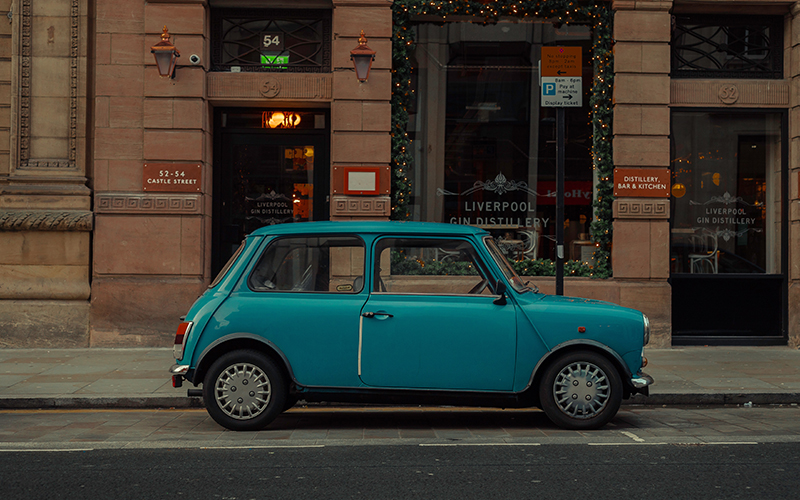
Credit: Photo by Courtney Hobbs on Unsplash
Space oddity
Launched in 1957 and originally sold in both Austin and Morris guise, the Austin version, bizarrely was originally going to be called the ‘Newmarket’ in line with the firm’s English town naming theme. Thankfully in the end it was called the Seven, sometimes rendered ‘Se7en’ in early advertising and the Morris was given Mini-Minor badging. Both adopted the simple ‘Mini’ name in 1969. Despite being so innovative the start was inauspicious.
Power came from the A-Series engine which was cutting edge at the time. The gearbox was located underneath and driven by drop gears (hence the trademark whine). It was accommodated by the Mini’s high bonnet line and allowed the engine to fit within the car’s narrow width. With a capacity of 848cc it made just 34bhp but because it was so light, it still felt nippy. Importantly it was fuel sipping too, easily returning 50mpg.
The adoption of Alex Moulton’s rubber cone suspension, thus doing away with the need for traditional suspension turrets, allowed further space saving. The only real sacrifice of fitting four adults in a 10ft long space was the tiny boot, although this was made up for to an extent by the handy full-width front parcel shelf and cavernous door bins.
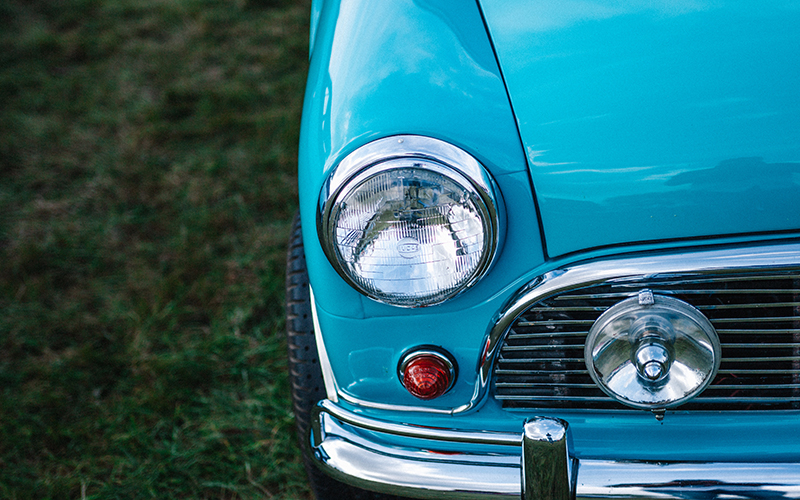
Credit: Photo by Clem Onojeghuo on Unsplash
Too hot to handle?
As any Mini owner from this era will testify, handling was a revelation at the time, its tiny 10in wheels, short travel suspension & precise rack-and-pinion steering made it very agile. Former F1 driver John Cooper was certainly impressed & at his suggestion, a ‘hot’ Mini Cooper with a 997cc A-Series engine became available from September 1961. A year earlier estate versions (based on the extended floorpan of the Mini van), were released as the Austin Countryman & Morris Traveller with double swing load doors & stiffer rear springs. The Mini Cooper S developed by Downton Engineering & boasting a 1071cc variant of the A-Series engine, broke cover in 1963.
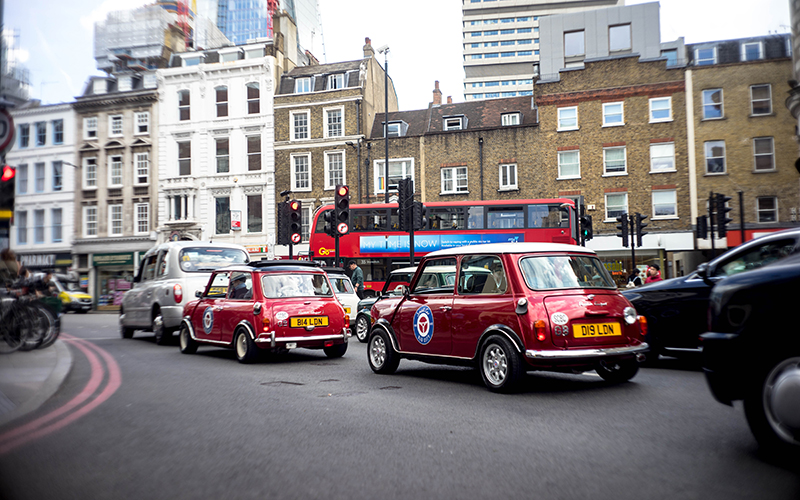
Credit: Photo by Ilinca Roman on Unsplash
Constant evolution
The first major running gear change came in 1964 with the adoption of Hydrolastic suspension. At around this time, standard Cooper models received a tiny capacity increase to 998cc, while the S models were increased to 1275cc. In the autumn of 1967, the MkII Mini arrived, sporting a revised grille, a larger rear window and the option of a 998cc ‘1000’ version with Cooper style remote gearchange. It also had improved brakes and from 1968 an all synchro gearbox. From 1969 the MkIII featured concealed door hinges, larger doors with winding windows and a return to rubber cone suspension. Although the 1275 GT and Clubman would retain the old fluid system until June 1971. Clubman and 1275cc variants with longer bonnets, squared off front wings and vastly different grilles arrived in late 1969 and the 850 auto was no more after 1971.
In 1976 the MKIV was introduced which had a rubber-mounted subframe and different rear lights from 1977. Meanwhile in 1979, the sought after 1098cc ‘1100 Special’ broke cover equipped with alloy wheels and vinyl roof covering and the 850 was killed off in 1980.
At this time, the range comprised of the poverty spec City, with a 42bhp 998cc engine and the plusher HL which was replaced by the Mayfair in 1982. This sat alongside the City E, a model designation meant to highlight improvements in economy. Slowly coming up to date the MkV appeared in 1984 with 12in wheels and front disc brakes. The Mayfair used the still very basic looking twin dial Clubman facia, while incredibly the City E retained the central speedo first used in 1959, well at least for another year when it was replaced by the more conventional dash in 1985.
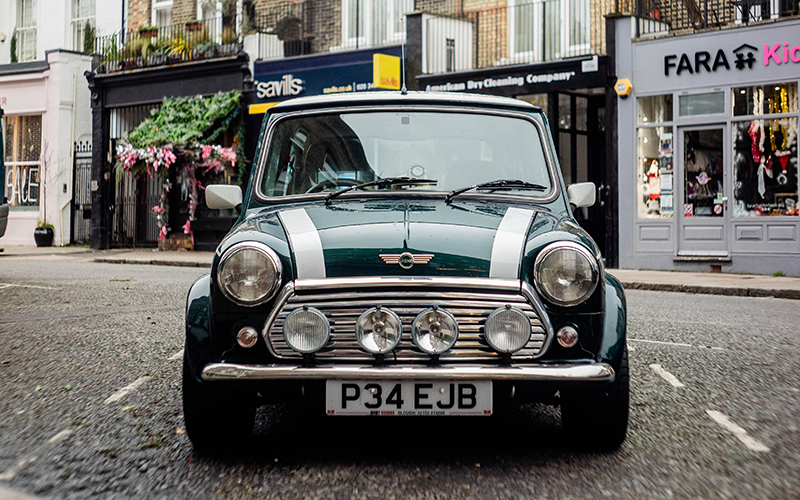
Credit: Photo by Ilinca Roman on Unsplash
Live another day
It was the arrival of the MkVI under Rover management and a raft of special editions that gave the Mini renewed interest from 1990. The highlight of which was unarguably the resurrection of the Cooper fitted with a catalyst equipped 61bhp version of the Metro 1275cc engine, Minilite wheels and contrasting bonnet stripes and roof colour. Just 1000 were built initially from July, with another 650 destined for the Japanese market. So popular were they that it became a regular production model from September.
An S model Cooper arrived in 1991 and later in the year single point fuel injection was used to meet emission controls, when they become known as the Cooper 1.3i and Cooper Si. This was followed by the launch in 1996 of the MkVI with multi-point injection engine with electronic engine management and electronic ignition developed under BMW control, complete with a more conventional dashboard and adriver airbag.
Classic Mini production stopped in October 2000 following the release of various Cooper S' and S Works' variants marking the end of an era. Several thousand remained in stock so it’s not unusual to find one registered just post this date.
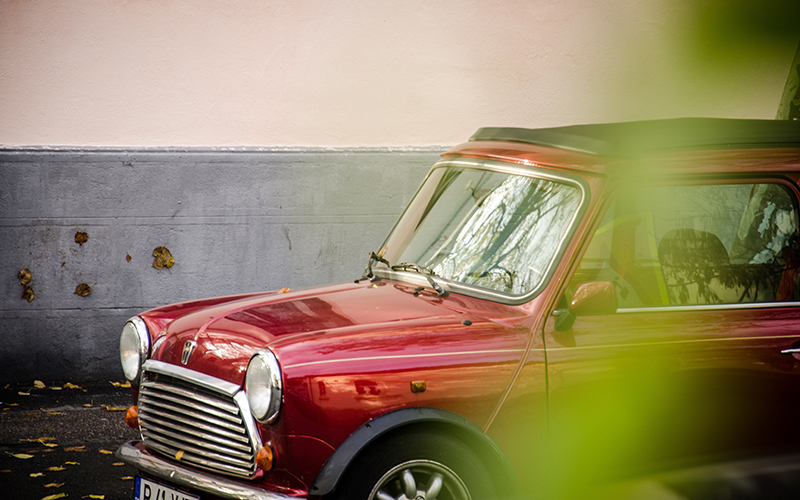
Credit: Photo by Petrisor Ionel on Unsplash
Buying one
Mini's rust, but there’s very little you shouldn’t be able to tackle yourself and getting hold of repair body panels and replacement running gear couldn’t be easier. The rear subframe and the bodywork to which it attaches are prime rust spots, as are the sills, front wings, scuttle, windscreen surround and floorpans. We could go on of course, but it’s also important to pay close attention to the lower door pillars, hinge supports, wing edges, door bottoms and roof gutters. You can even buy complete Mini bodyshells if things are really bad.
The Mini’s A-Series engine is tough and dependable but look for blue smoke under acceleration which points to worn pistons, rings and cylinder bores. The fab thing is that everything’s available for virtually every era of car. Be aware of creamy gunk under the oil filler cap which hints at the possibility of head gasket problems. If it’s too warped, we offer a replacement cylinder head. Gearboxes can become noisy, but worse is weak synchromesh and jumping out of gear. Any knocks while going from lock to lock will probably be due to worn driveshaft CV joints. Also look for oil leaks from the driveshaft seals and where the gearshift enters the back of the box as seepage from here is common. That early Hydrolastic suspension was fragile so beware of any fluid leaks and a car that sits down on one corner. The dry rubber cone setup has very little that can go wrong with it, so uneven tyre wear will most likely be due to tracking issues.
Brakes aren’t likely to present any headaches as long as they’ve been regularly attended to; discs make a difference, as does a servo which was fitted from 1988. Drum all round models may scare the uninitiated modern hot-hatch driver, so beware. We can supply all the brake components you'll need. Early very spartan Minis will be relatively easy to retrim; quality made to measure carpet sets will instantly freshen up the look of a tired interior.
Due to its simplicity, electrical gremlins on early cars should be straightforward to diagnose and rectify but as the cars got more complex, so did the potential for problems. That’s why it’s important to check that items such as central locking works as it should. If you’re embarking on a project, it might make sense to replace the old tired wiring loom.
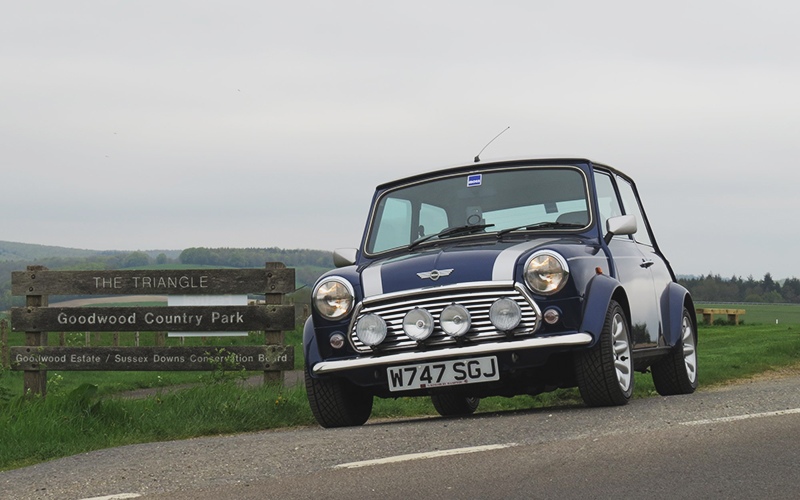
Credit: Photo by Moss Europe
How much?
MkIV Minis may be devoid of discs or a servo & they’re slower, but this is where the real bargains lie. In fact, you can still pick up an ‘80s example for as little as £1,500 (projects will be around £800). The MkV however, is better, has nicer kit as standard & a better gearbox for motorway driving. Minis from the ‘90s are still only £3,000 but late Coopers are going up in value fast & £6,000 is a realistic starting price, although the Cooper S & Sport 500 will be a lot more. In fact, you might need to spend £25,000 for one with only a handful of miles on the clock.
As for the early Minis, the condition of the body is crucial – and a ‘shell' alone that doesn’t resemble a sieve will start at around £4,000. A Mk1 in possession of an MoT will probably begin at £6,000 to £8,000, whilst a well-restored car will be more like £8,000 to £10,000. The best early Minis now make £15,00 to £18,000. Basket case Coopers if you can find one, will be £6,000 or £15,000 to £20,000 finished and Cooper S models are a totally different kettle of fish again. Mildly mismatched cars kick off at £20,000, with the best examples with their original engines and interiors making anywhere between £35,000 to £40,000.
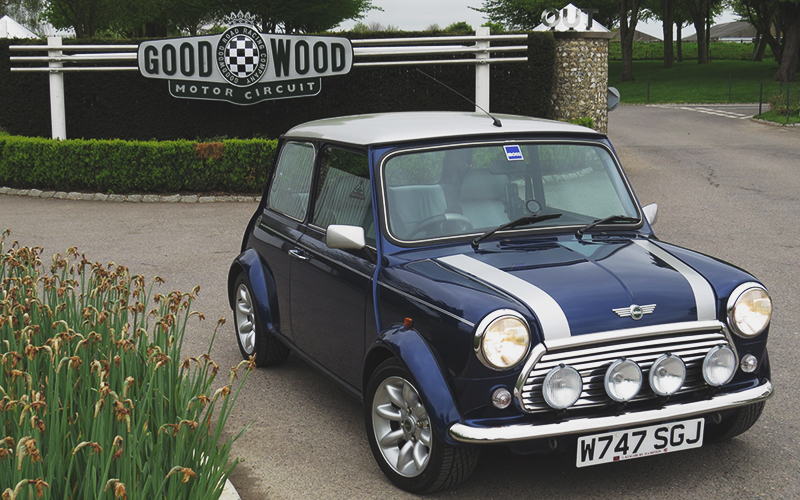
Credit: Photo by Moss Europe
Mini maintenance
Little has changed regarding servicing routines over the decades when it comes to keeping a Mini in good health. The grease points on the front swivel joints and rear arm bearings still need attention. Even the very last Minis share the need to change engine oil and filter every 3000 miles or annually due to the fact that the oil is shared with the gearbox. A quality 20w50 oil like the spefically designed Dynolite Classic should be used as anything else will be too thin. While you are at it, you might also want to carry out a ‘spin off’ oil filter conversion. Special attention should be paid to Mini cooling as silting up is common, making regular flushing a good idea, making sure the heater valve is in the hot position. It’s worthwhile checking the water pump for excessive play as well, but to do this you will need to slacken off the fan belt first.
As for the suspension, feel for play in the track rod ends and balljoints by jacking the car up first and try and rock the wheels from top to bottom. Checking the function of shock absorbers is difficult, but if they’re the originals then a replacement could make a huge difference to overall ride quality. We stock a wide range of replacement parts for steering and suspension.
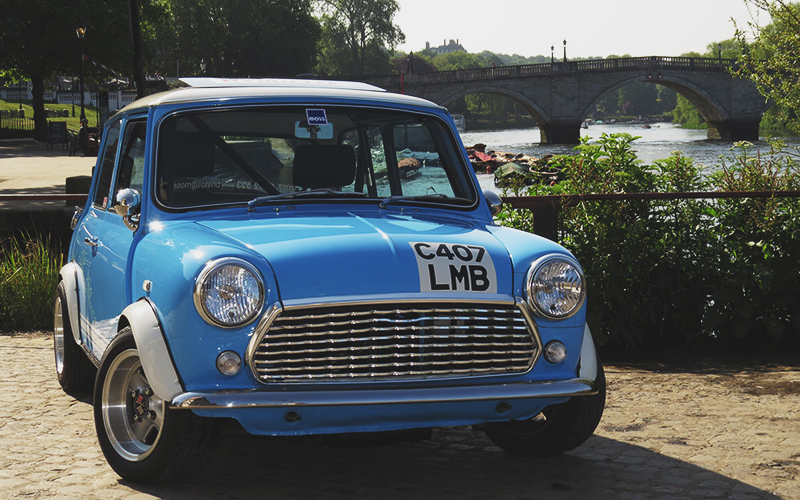
Credit: Photo by Moss Europe
And finally…
It goes without saying you can basically do anything to max up a Mini! Engine swaps are reasonably common, with 1275cc units from the Metro a popular route to gaining more punch. Not that we’d advocate whipping the engine out of an original example. Also, with 850 parts becoming more scarce, it’s common to fit a later 998cc engine in these cars.
Starting with the simple things first, it’s a good idea to retro fit a temperature gauge on pre-1985 City models which didn’t have one fitted as standard. We do one that measures oil pressure and temperature too and with the eighties Minis, upgrading to an electronic distributor does away with the need to fiddle with points gaps and makes it more resilient to water ingress.
Even the diminutive 998cc engine can be improved upon with cylinder head and carb upgrades being the most obvious way to go. Our Stage One tuning kits, which will make a Mini breathe more easily. Beyond that it’s a case of going for a polished and ported big valve head and a more wild Kent camshaft. It’s reckoned such mods along with a less restrictive exhaust will allow owners to bump up the power of a 1275cc unit from around 63bhp to 92-93bhp. Meanwhile, that famed Mini handling can be made even better with adjustable gas shocks which will allow it to go round corners faster than just about anything out there. There’s even a kit to lower a Mini. Converting to discs at the front is another popular upgrade for Minis with drum brakes. For reference, and to give you a feel on what’s available, check out our full range of Mini performance and tuning options. As for cosmetic tweaks, the choice is just as huge, and includes everything from bonnet pins to stainless sump guards which can be found in our range of Mini exterior accessories. Oh, and it’s the same story inside as well, to improve, support and add a retro motorsport feel inside, view our full range of Mini interior accessories.
Whether it’s stock or modified, an early one or an example from the late nineties, the Mini still does what it always did best – and that’s satisfy lots of people in a variety of different ways. In fact, it’s still a Mini marvel!
We pride ourselves on stocking a wide and varied range of Mini parts & accessories to suit all enthusiasts.
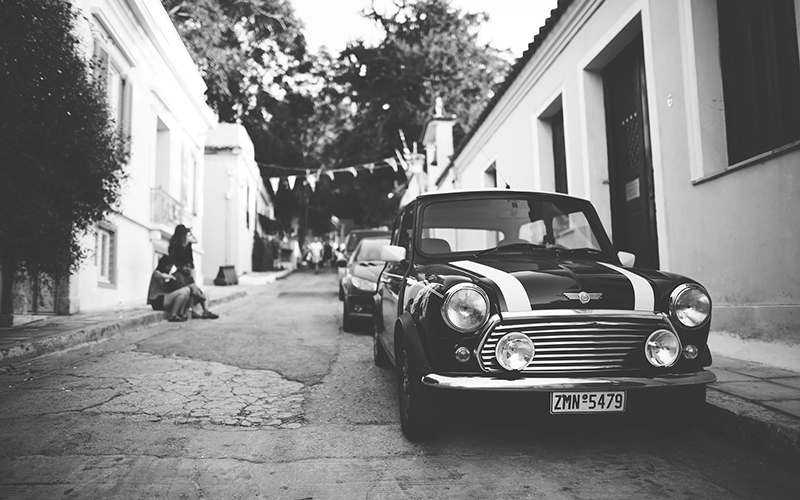
Credit: Photo by Pexels on Pixabay

Keep up with all the latest from Moss on our social pages
|
|











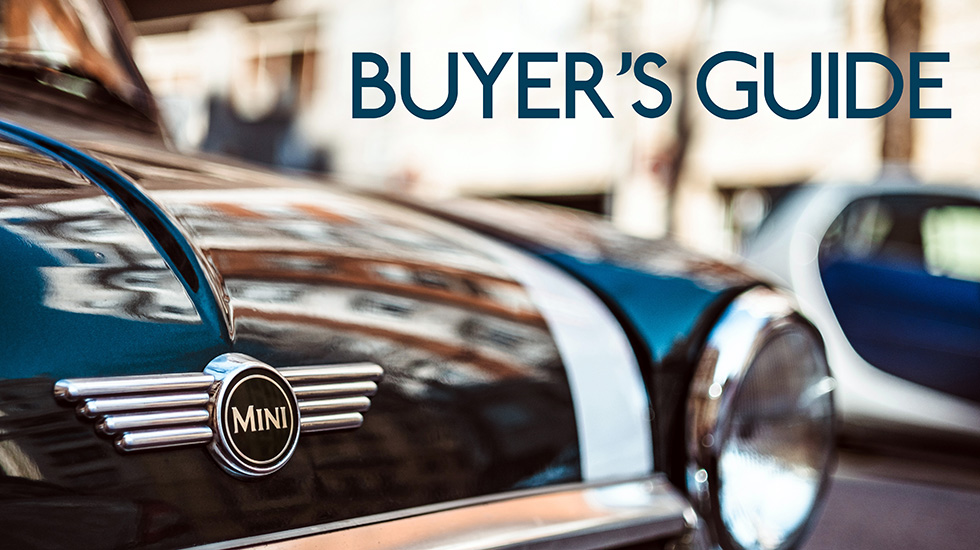





